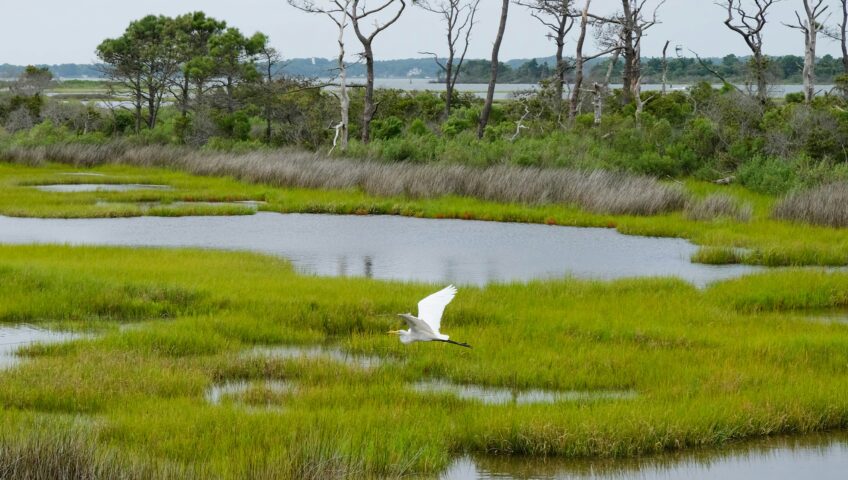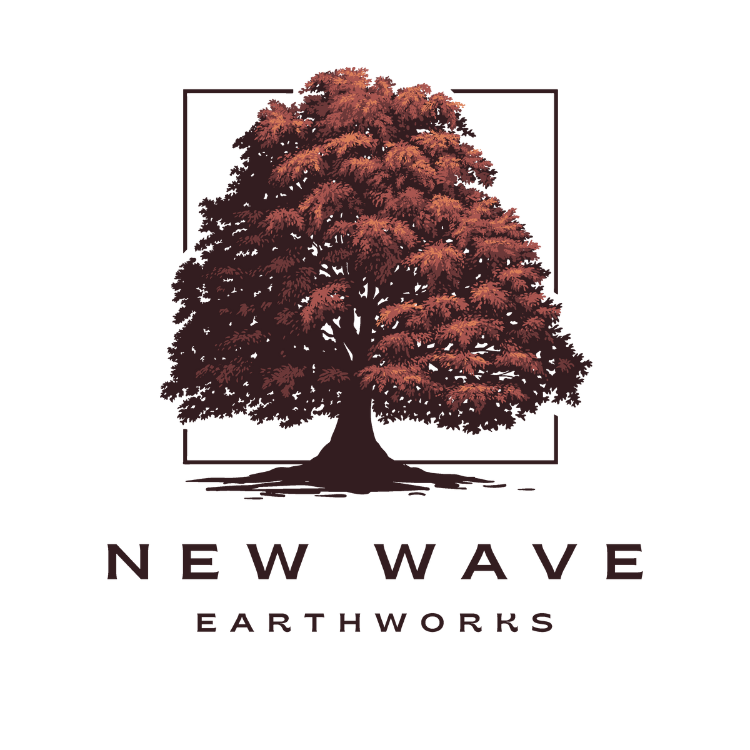Wetland restoration is a vital process that receives and preserves the natural functions of wetland ecosystems. For the Lower Mainland, wetland restoration is key for sustaining biodiversity and water quality. These wetlands serve as essential habitats, natural flood protections, and water purification sources. But how do you restore wetlands in the Lower Mainland?
Wetland restoration in the Lower Mainland is a complicated process. The region’s climate conditions and other factors make every wetland a unique challenge. However, we can help restore these ecosystems through strategies such as creating natural contours, planting native species, using natural elements as materials, burning wetlands selectively, and more.
In this article, we will look at 5 proven strategies driving wetland restoration in the Lower Mainland. To make reading easier, we’ve segmented these strategies based on their areas of impact. We will briefly discuss each strategy while talking about their overall impact on the process.
Wetland Restoration Starts With Hydrology
Water flow is the essence of a wetland, and it’s vital for the restoration process. In the Lower Mainland, restoring proper water flow requires diverse and varied solutions. Let’s look at 4 strategies that show results in restoring hydrology.
- Creating Natural Contours: Creating natural curves that help water flow is crucial for the hydrology restoration process. This process involves careful observation of the contours of the wetland, and then mimicking its curves as much as possible to carve out a path for water to flow in.
- Managing Sediment Layers: Sediment is yet another crucial element of wetlands. Uneven distribution or improper distribution of layers can block water flow, or fail to filter it properly. Debris present in the sediment layers may amplify these issues. Careful removal of debris and redistribution of layers help the wetland revival process greatly.
- Blocking Drainage Sources: Dismantling drains, ditches, or tiles that remove water from the wetlands is an effective way to revive them. Delta’s Burns Bog revival process required building peat dams, wood dams and steel weirs to block over 500 drainage ditches.
- Using Technology: Intelligent use of technology can help smoothen and expedite the process of restoration. Remote sensing, GIS, and drones can be used to map wetland boundaries, track vegetation, identify invasive species and more. Automated water control systems such as intelligent weirs and pumps, along with diffusers and mixers can help mimic natural hydrology.
If a wetland’s habitat is intact, it’s better to use amphibious excavators to not disturb the ecosystem’s health.
Wetland Restoration Relies on Native Plants
Native plant species such as Cattails (Typha latifolia), Sedges (Carex aquatilis), and Skunk Cabbage (Lysichiton americanus) are adapted to wet soil conditions and play a vital role in restoring wetlands. Here are 3 reasons why these and other native species are essential for restoring and preserving wetlands:
- Erosion control: These species are well adapted to wet soil conditions, and have deep roots that hold onto soil. With enough of them planted, we can save wetlands from soil erosion.
- Wildlife support: Animals such as muskrats and waterfowl feed on the shoots, rhizomes, and seeds of cattails. Sedges and Skunk Cabbage also serve as food sources for waterfowls and rodents. As these animals consume these plants, they also help spread the seeds, creating a perpetuating symbiosis that helps preserve the ecosystem of wetlands.
- Invasive resistance: Native species that grow in wetlands have dense foliage and deep roots. Many also grow at equal or faster rates than invasive species such as the Himalayan Blackberry (Rubus armeniacus). Combined with planned manual removal and herbicide use, these species can thrive easily and prevent invasive species from returning.
In Richmond’s Terra Nova Park, volunteers put in their efforts to remove invasive shrubs, and plant native ones to create habitats for birds and other animals.
Wetland Restoration Demands Community Partnerships
For wetlands restoration, collaboration is key to success. In the Lower Mainland, First Nations like the Musqueam have taken the initiative in wetlands restoration. For instance, the Tsleil-Waututh Nation reintroduced camas lilies to Burrard Inlet wetlands, reviving cultural and ecological ties. There are 3 ways communities can contribute to wetland restoration:
- Heritage Education: Indigenous communities teach their newer generations and others about their cultural and spiritual association with wetlands. Their deep connection to the wetlands helps raise awareness about wetlands restoration. As a result, more resources and attention is directed towards the goal. For example, their efforts resulted in students in Maple Ridge planting sedges in the Alouette River wetlands.
- Farm alliances: As communities become aware of the importance of wetlands, they become more cautious of their action. For example, Abbotsford farmers have been adopting buffer strips in fields to reduce pesticide runoff.
- Community Surveillance: A blend of technology and community effort helps keep track of how much wetlands have recovered, and what they might need. Apps and forums such as iNaturalist allow people to record and upload their nature observations online. Such forums and applications are used to track species returning to restored sites.
Through collaborative efforts, communities draw positive attention to the state and function of wetlands.
Wetland Restoration Uses Adaptive Techniques
Every wetland site is unique, and it is more so for the Lower Mainland. The region’s geographical position and the resulting microclimates make every wetland a new, unexplored challenge. In the region, restoration efforts have to adapt to challenges like sea-level rise or urban runoff. For example, Port Moody’s Noons Creek combined leaky dams and bioswales to filter stormwater before it enters wetlands.
Here are 3 innovative ways wetlands restorations curbed issues on-site:
- Nature-inspired Solutions: Engineering solutions often take inspiration from nature. For example, to slow water flow in Coquitlam’s Hyde Creek, man-made wood structures that mimic beaver dams were deployed.
- Bioengineering: There are instances where the natural elements themselves become part material for the developed solution. For example, live willow stakes were used to stabilize eroded banks in Langley’s Nicomekl River.
- Climate-ready Designs: The temperamental nature of the Lower Mainland’s climate requires solutions to adapt to varying conditions, and predict oncoming issues. A good example of such a design would be the elevated beams in Boundary Bay, which were designed for future sea-level rise.
While restoring wetlands, its conditions can drastically change. So, we have to be prepared to handle critical issues that may stem at any point.
Wetland Restoration Requires Long-Term Stewardship
Wetlands restoration isn’t a one-time fix. Maintaining restored sites is a long-term commitment that comes after the process is completed. Site restoration programs such as Metro Vancouver’s Fraser River Estuary have monitored sites for nearly a decade, controlling invasives and replanting native species as needed. Annual programs also engage locals to track frogs, birds, and insects.
There are 2 ways wetland maintenance efforts are made:
- Invasion Management: Locals and nature enthusiasts help track and remove invasive species through events and individual efforts. For example, volunteers in the Lower Mainland track and spot-spray knotweed in Burnaby’s Deer Lake Park.
- Controlled Burns: Another way to maintain wetlands is to renew bog habitats. Controlled burns remove accumulated dead plant material, reduce the risk of wildfires, and maintain a balanced ecosystem. Burning off excess vegetation also promotes biodiversity, as new plant species and animals can occupy the vacant space.
Another effective strategy to maintain the wetlands is to encourage the local communities to share knowledge and participate in the efforts. Overall, the best outcome possible can only come from experienced and dedicated people of the Lower Mainland who truly care about the preservation of wetlands. And at New Wave Earthworks, that’s exactly what you’ll find.
New Wave Earthworks. Wetland Restoration Experts.
Wetlands restoration is a complicated process that requires proper knowledge, dedication, and patience. New Wave Earthworks has extensive experience in large-scale wetland restoration projects, aimed at reviving these crucial ecosystems. We conduct careful planting of various species specific to each project, and our crew is adept at the removal of invasive species, ensuring the long-term health of these restored areas.
So, if you are looking for environmental construction experts in the Lower Mainland, especially Chilliwack, Abbotsford, and the Tri-Cities, New Wave Earthworks is your best solution. Call us today at (604) 855-2603!
Conclusion
Wetland restoration is vital, but it requires a monumental effort to get right. The Lower Mainland’s climate conditions only increase the complications. Yet, it’s possible to revive these precious ecosystems with collaborative effort, a little bit from all of us. So, don’t hesitate and volunteer with organizations such as BC Wildlife Federation and do your best to save our natural resources.


